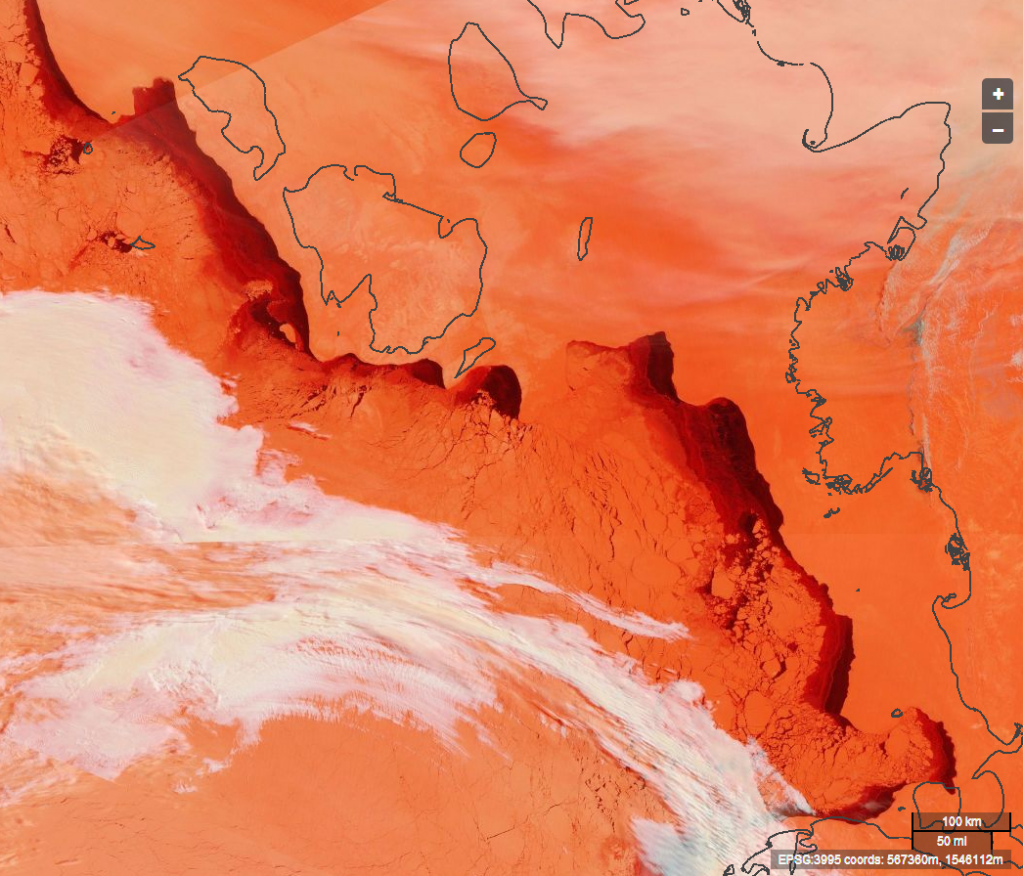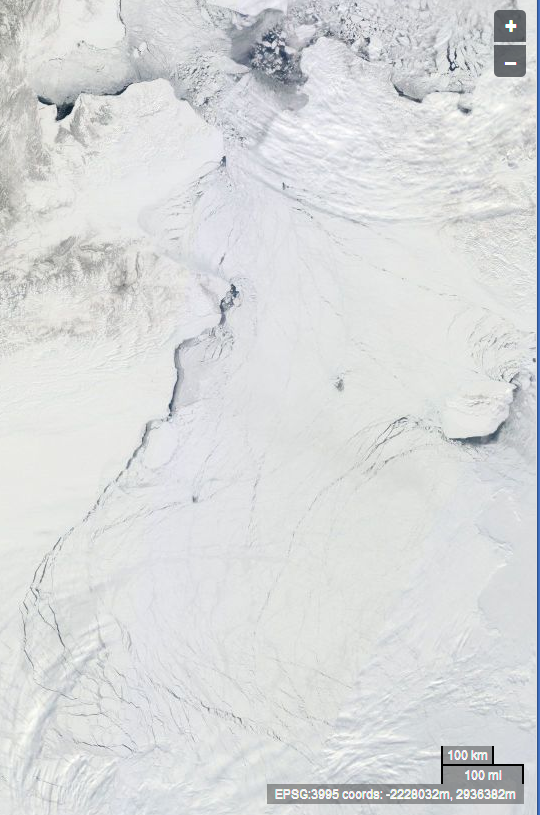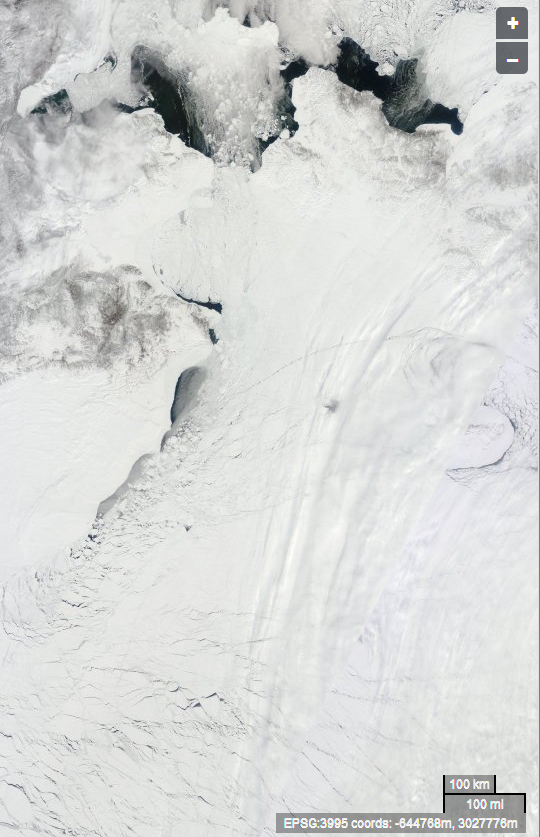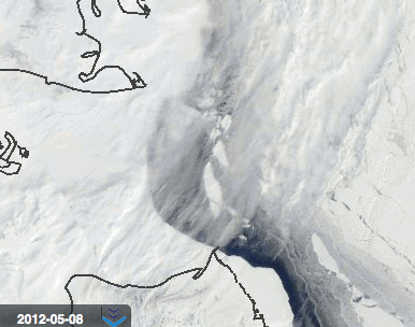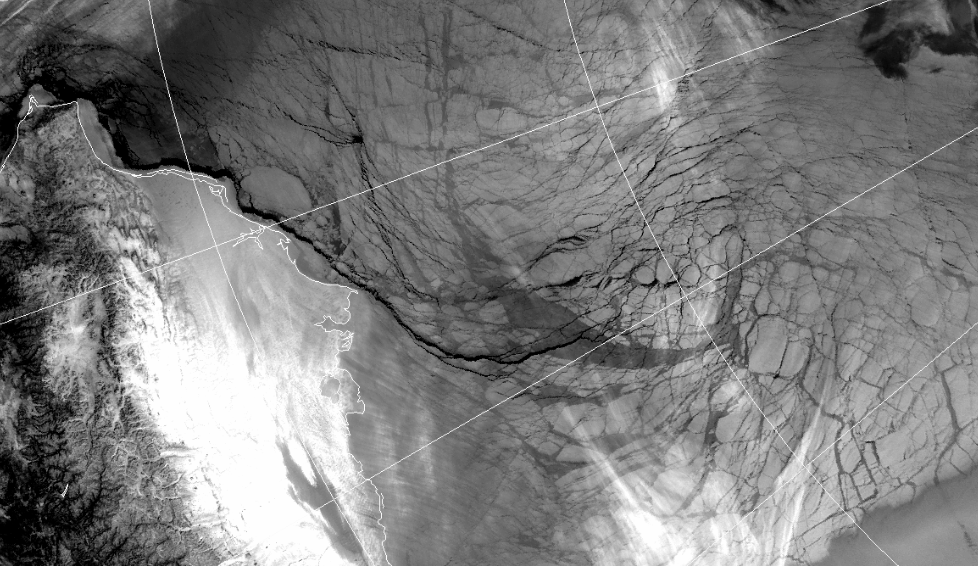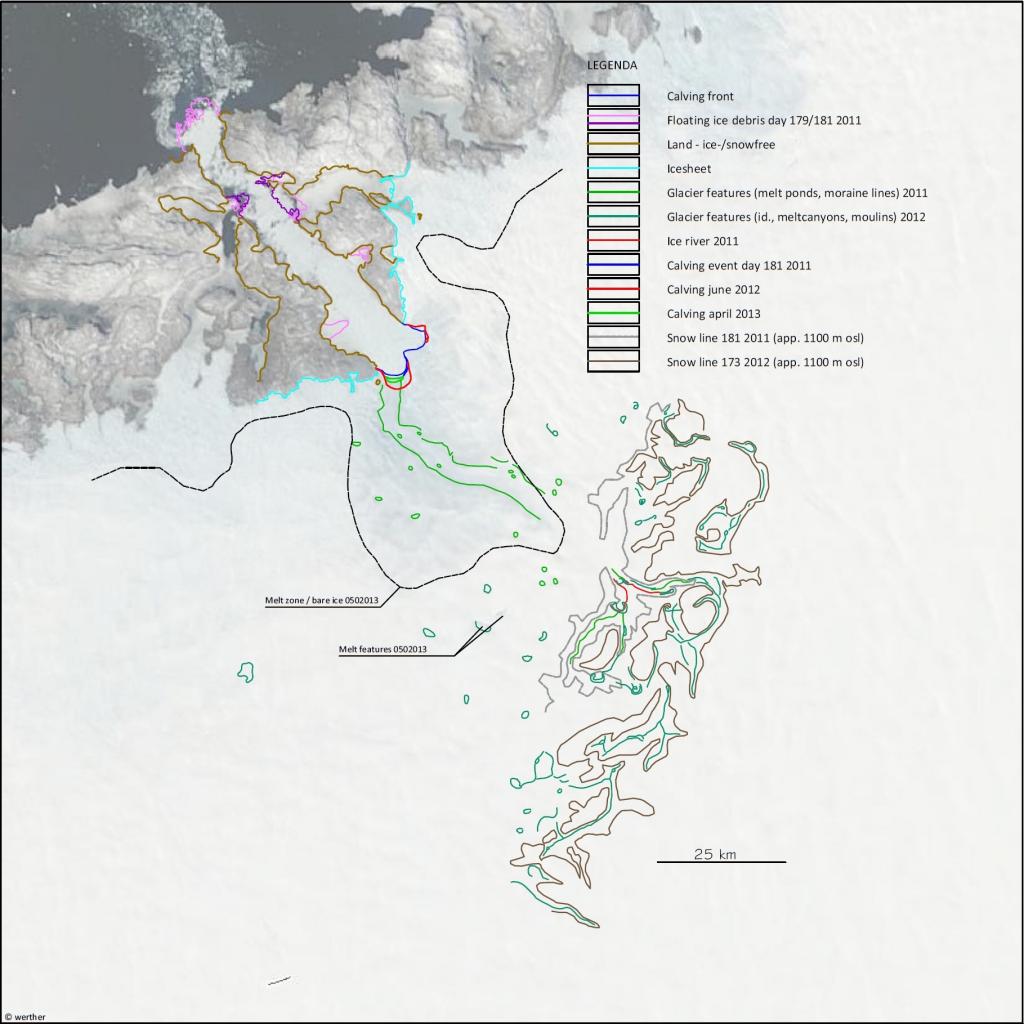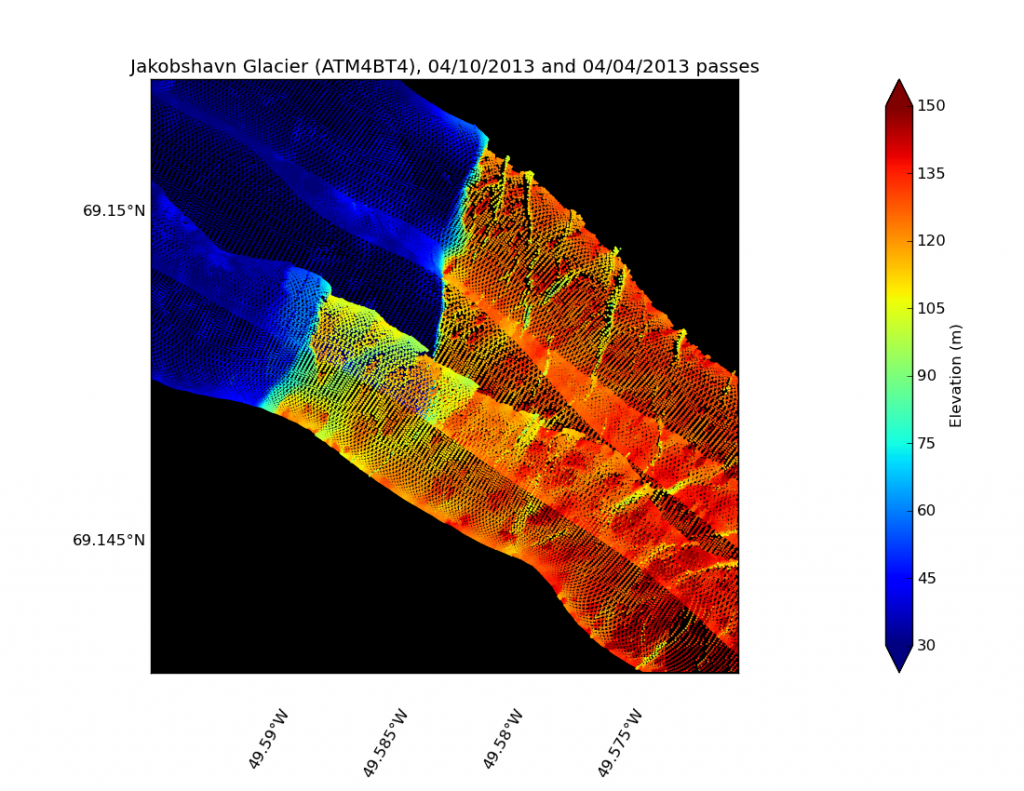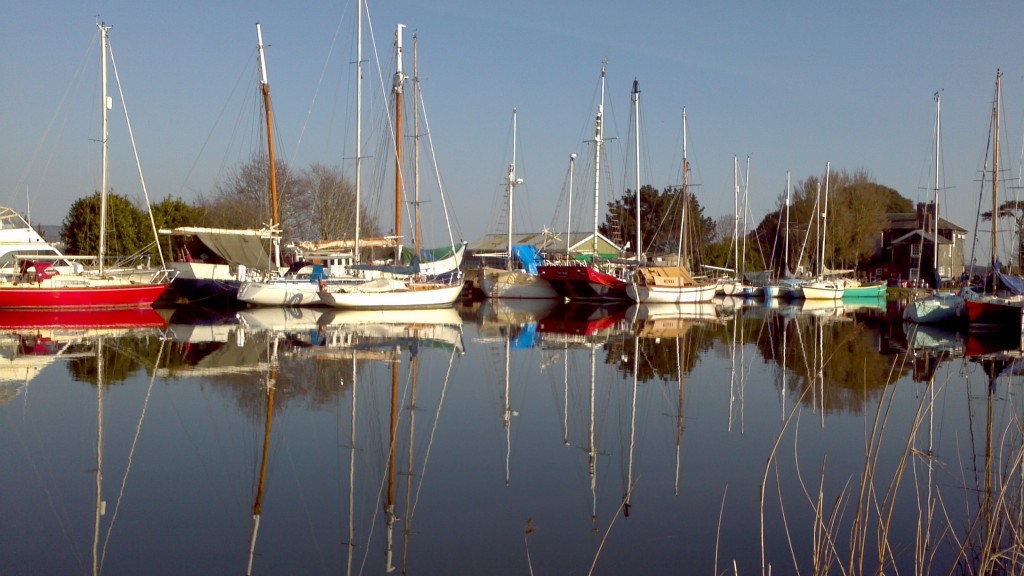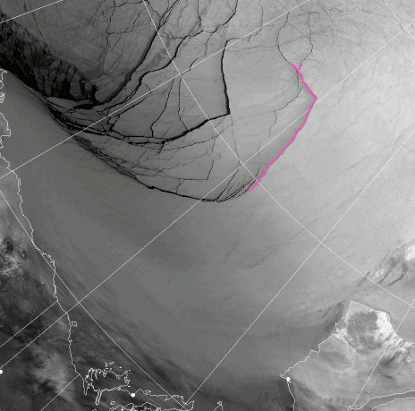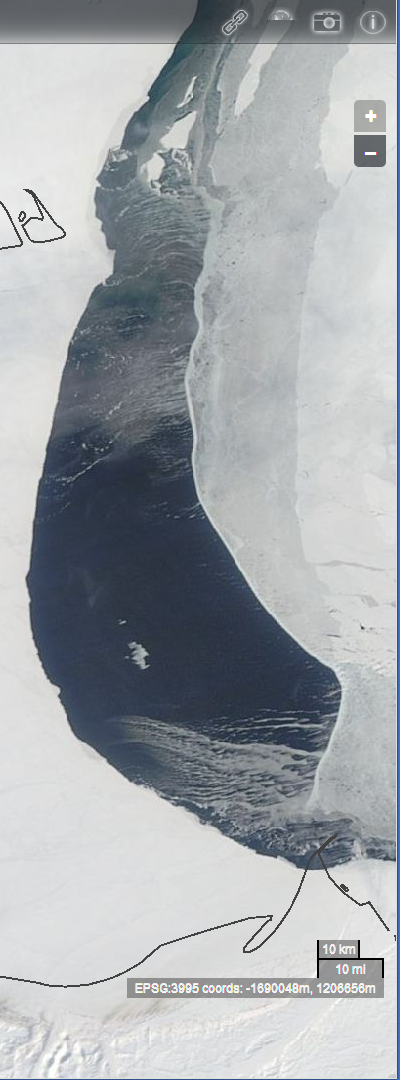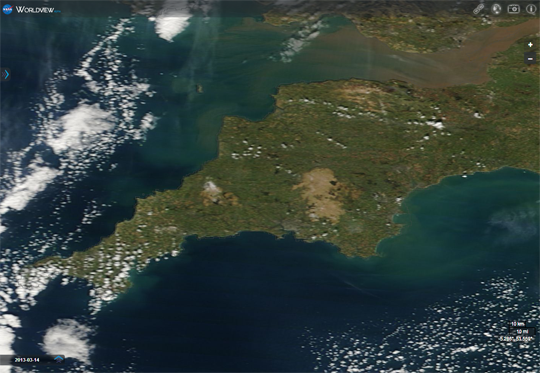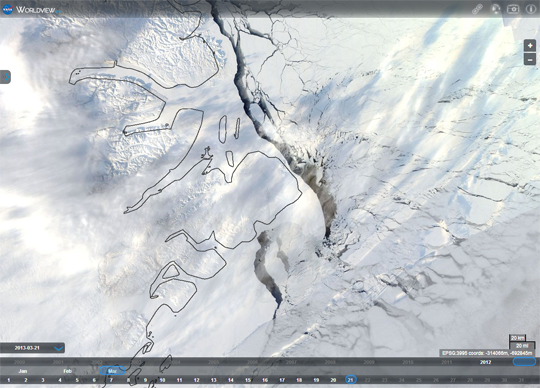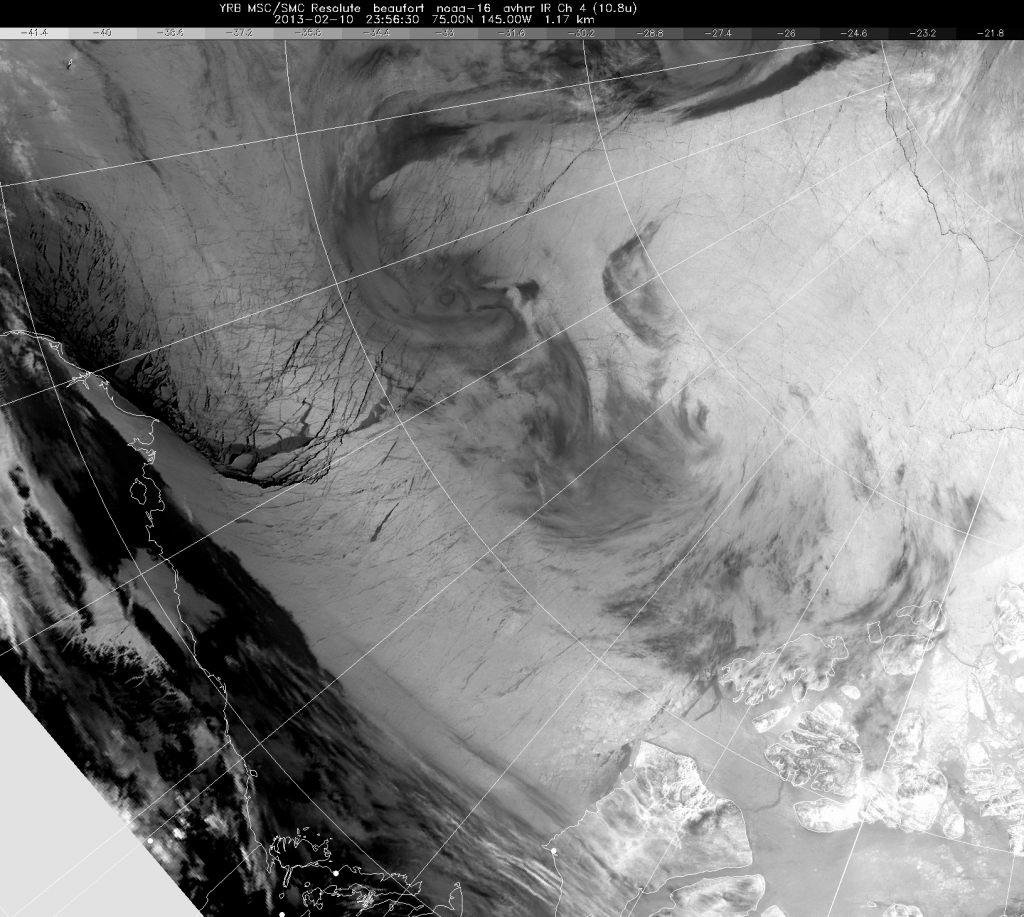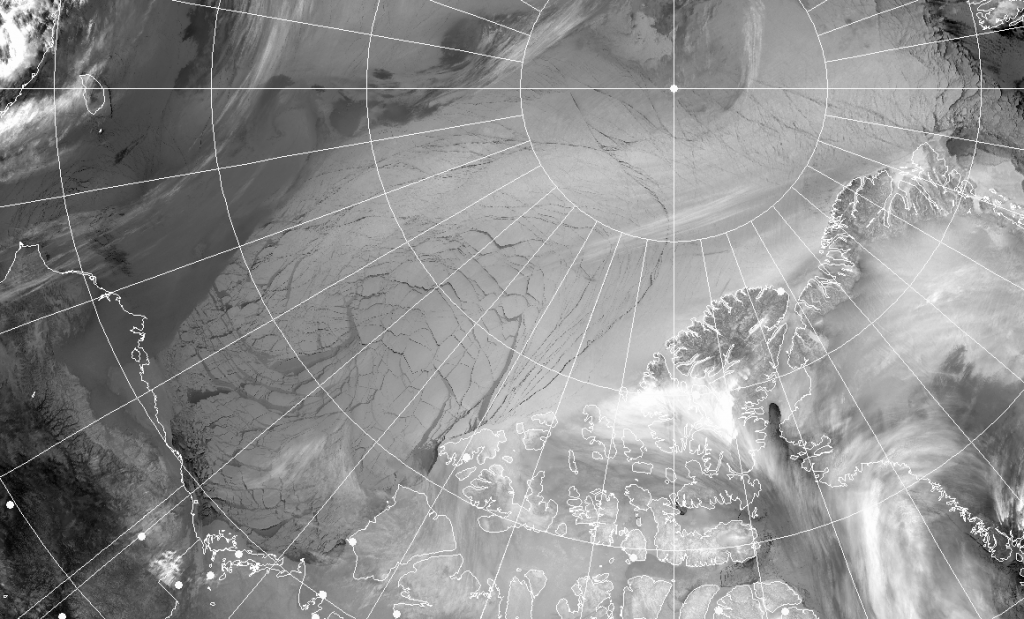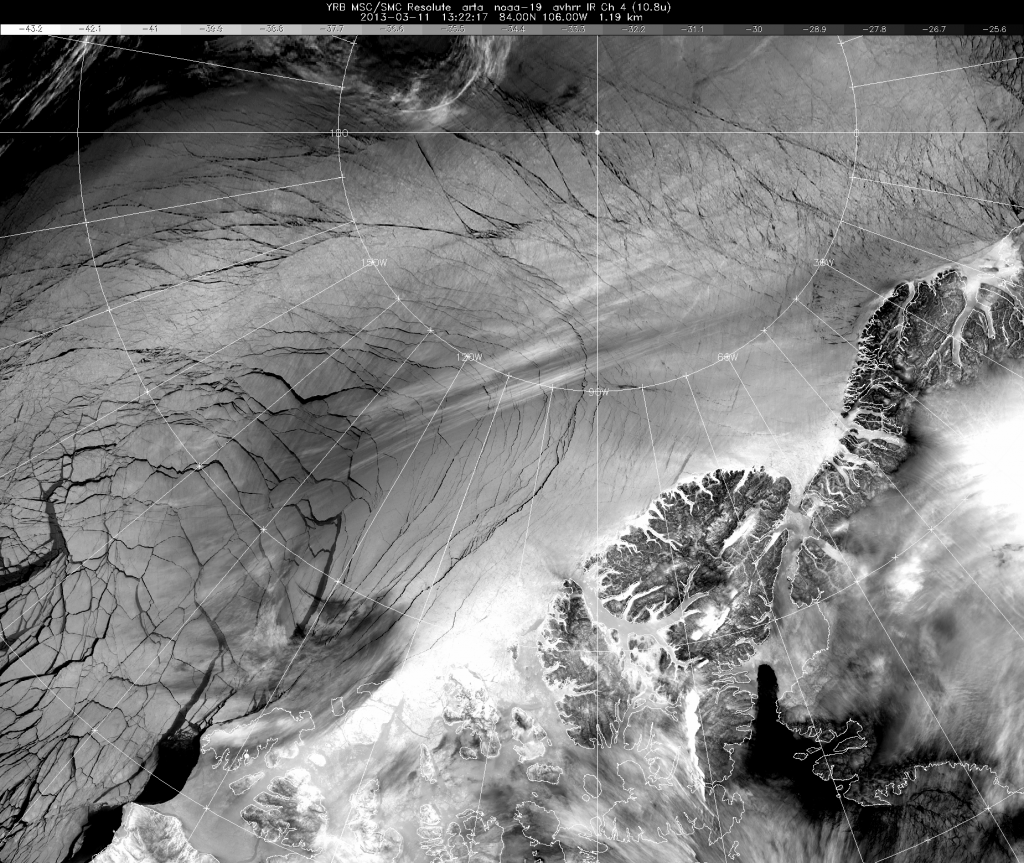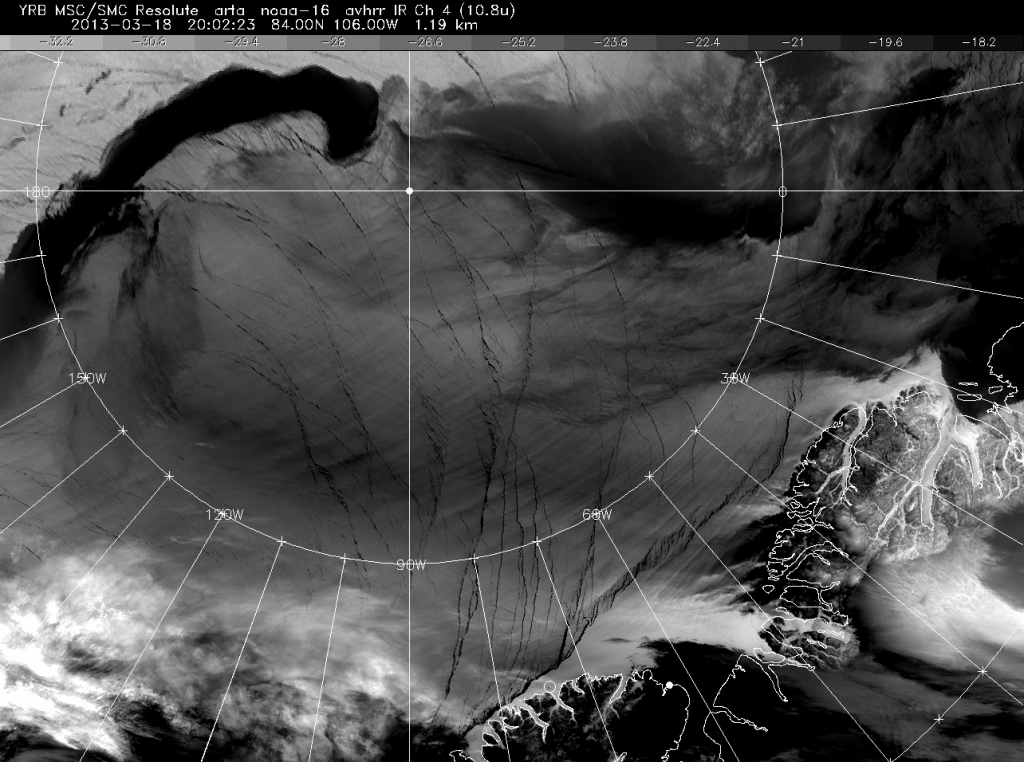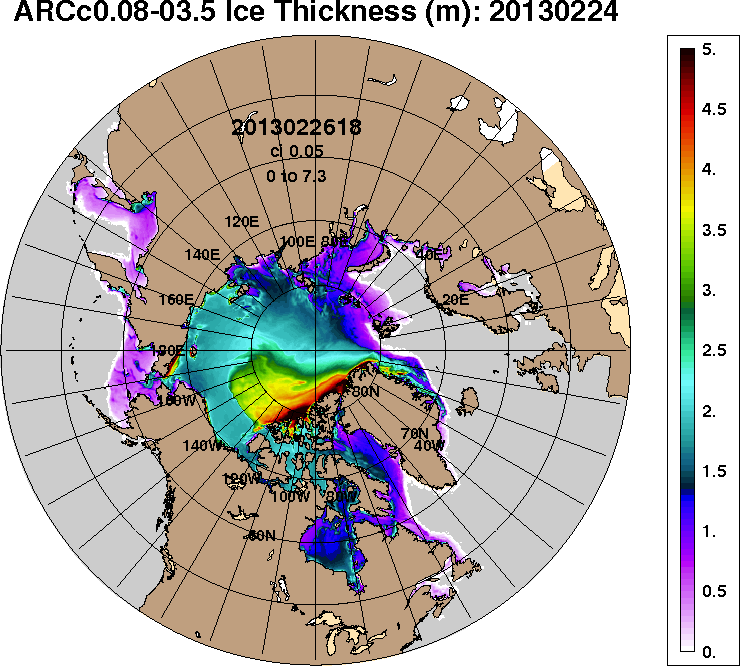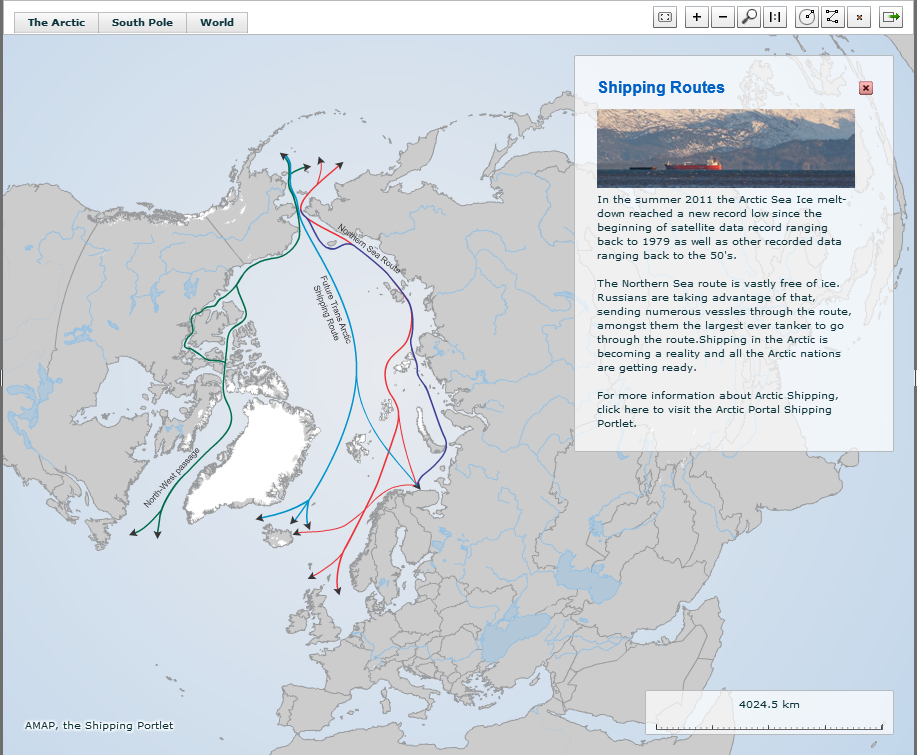Today is April 1st, Easter Monday 2013. However this tale is no joke. Before we get on to more serious matters would you care to join me in some festive fun? Let's play "spot the difference"! To get some images free from clouds I've gone back in time a couple of days into March. Having done that here's a bird's eye view of the Disko Bay area of western Greenland, taken on March 28th 2013:
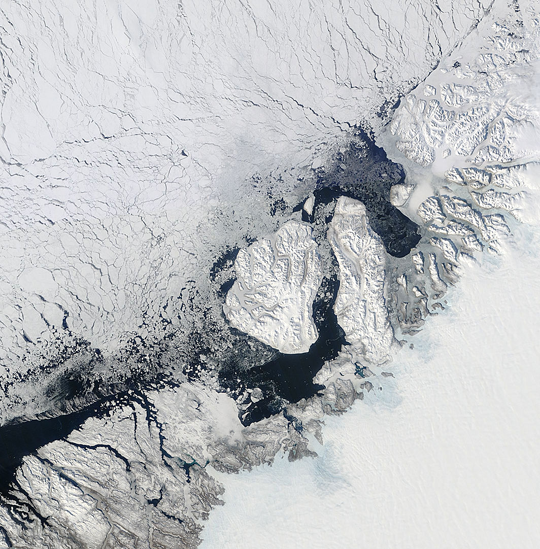
The Disko Bay area of western Greenland on March 28th 2013
Now here's one taken a year earlier, on March 28th 2012:

The Disko Bay area of western Greenland on March 28th 2012
Do you notice any difference?
Whilst you ponder that question I'll endeavour to explain the relevance of the econnexus Easter quiz to the title of today's post. Fresh from enjoying the experience of having my constructive climate change comments deleted by the "Mail Online" a couple of weekends ago, I now bring you the fruits of my experience over the weekend on the The Economist web site. Just in case you're wondering, The Economist "online" does allow relevant links, and doesn't seem to delete relevant comments.
In their latest print edition The Economist includes a leader entitled "Apocalypse perhaps a little later" which says (amongst other things) that:
It is not clear why climate change has "plateaued" (see pages 81-83)
Frankly it is astonishing news to me to read that "climate change has plateaued" and for reasons I will explain shortly it ought to be astonishing to The Economist's leader writer also. Turning eagerly to page 81 I discovered an article in the "Science and technology" section, which begins as follows:
Climate science
A sensitive matter
The climate may be heating up less in response to greenhouse-gas emissions than was once thought. But that does not mean the problem is going away.
Over the past 15 years air temperatures at the Earth’s surface have been flat while greenhouse-gas emissions have continued to soar.
Perhaps the Economist's leader writer is confusing "climate change" with the Economist's Science and Technology writer's "air temperatures at the Earth’s surface"? At least the leader writer gives the impression that they may recall having read James Astill's Economist Special Report entitled "The melting north" from June 16th 2012, in which he said (amongst other things) that:
The Arctic is warming twice as fast as the rest of the planet.
The area of Arctic land covered by snow in early summer has shrunk by almost a fifth since 1966. But it is the Arctic Ocean that is most changed.
Scientists, scrambling to explain this, found that in 2007 every natural variation, including warm weather, clear skies and warm currents, had lined up to reinforce the seasonal melt. But last year [i.e. 2011] there was no such remarkable coincidence: it was as normal as the Arctic gets these days. And the sea ice still shrank to almost the same extent.
Of course since those words were written the Arctic has experienced the record shattering melting of sea ice during the summer of 2012. Mr. Astill went on to write:
There is no serious doubt about the basic cause of the warming. It is, in the Arctic as everywhere, the result of an increase in heat-trapping atmospheric gases, mainly carbon dioxide released when fossil fuels are burned. Because the atmosphere is shedding less solar heat, it is warming—a physical effect predicted back in 1896 by Svante Arrhenius, a Swedish scientist. But why is the Arctic warming faster than other places?
In partial answer to that question he goes on to explain that:
The main reason for Arctic amplification is the warming effect of replacing light-coloured snow and ice with darker-coloured land or water. Because dark surfaces absorb more heat than light ones, this causes local warming, which melts more snow and ice, revealing more dark land or water, and so on. Known as the albedo effect, this turns out to be a more powerful positive feedback than most researchers had expected. Most climate models predicted that the Arctic Ocean could be ice-free in summer by the end of this century.
Are you beginning to see the connection with our Easter 2013 quiz question yet? Returning to the present day from early summer 2012, the writer of "Climate science – A sensitive matter" seems to be unaware of any of this, since in their three page article they do mention "feedbacks", but the words "albedo" and "Arctic" are conspicuous only by their total absence. This is all the more surprising, to your humble scribe at least, since less than three weeks ago I attended The Economist's very own "Arctic Summit" in Oslo. The Economist invited a panel of scientists, who one must assume were considered by that august journal to be eminent in their respective fields, to briefly address the assembled throng. First to speak was Stefan Rahmstorf, Professor of Physics of the Oceans at Potsdam University, who gave an overview of his recently published scientific paper "Quasiresonant amplification of planetary waves and recent Northern Hemisphere weather extremes", which concludes (amongst other things) that:
The data and results we present suggest that atmospheric conditions already might have changed to the extent that the considered quasiresonant wave amplification may occur rather frequently. The most recent example might be the destructive heat waves in the United States and southern Europe accompanied by catastrophic floods in China and Japan in June–July 2012.
Stefan himself concluded his remarks in Oslo by saying that:
We know there is enough ice in Greenland to raise global sea level by 7 metres. We also know that the Greenland Ice Sheet has a critical warming threshold beyond which it will decay due to some kind of "vicious circle", so I think we should all care about the Arctic, and about stopping global warming as fast as we can.
With that message possibly still ringing in his ears the very same James Astill eventually concluded the session, which the event agenda described as "Assessing the risks of a melting Arctic", by asking the four panellists to take part in "a little quiz" with "reputations on the line". He asked:
What is your prediction for when we're going to get a largely ice free summer Arctic?
Listen for yourself:
Stefan answered without hesitation "2040". James next asked Rear Admiral Jonathan White of the United States' Navy, who said:
I got asked this same question by an Admiral in the Navy a couple of months ago, but it was "when are we going to see one month of ice free conditions in the Arctic", ice free being defined as 15% or less ice coverage area wise. I said I think it's happening faster than we thought before. My predecessor said around 2030, and I'm saying 2023. About ten years, and that's pretty aggressive.
Having spoken to him a couple of times in Oslo, I can assure you that Rear Admiral White does not come across as the stereotypical loony left tree hugging environmental activist. All of which raises a big question, in my mind at least, which is:
What on Earth were The Economist thinking of when they printed the words "Apocalypse perhaps a little later" above their weekend leader? They surely can't have meant a little later than 2100 or even 2050. Did they actually mean a little later than The Day After Tomorrow?
In conclusion, for the moment at least, please note that according to their contents page, The Economist was:
First published in September 1843 to take part in "a severe contest between intelligence, which presses forward, and an unworthy, timid ignorance obstructing our progress."
Need I say more? Perhaps only to ask what your own answer to my little festive quiz might be, and also your answer to James Astill's slightly earlier one should you be in a particularly festive mood today?
